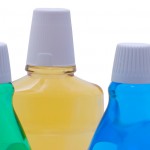
Triphala mouthwash is derived from three medicinal trees, Amalaki (Embalica officinalis), Vibhitaki (Terminalia belerica) and Haritaki (Terminalia chebula). It has been shown to have anti-microbial, anti-inflammatory and antiseptic properties and studies have reported that Triphala mouthwash (TRP-MW) may inhibit gingival inflammation.
The aim of this review was to compare the efficacy of Triphala and chlorhexidine mouthwash in the treatment of plaque-induced gingivitis.
Methods
Searches were conducted in the MEDLINE/PubMed, EMBASE and Cochrane Central Register of Controlled Trials (CENTRAL) supplemented by hand searching of the journals, Journal of Periodontology, Oral Health Preventive Dentistry, Journal of Periodontal Research, Journal of Periodontal and Implant Science and Journal of Clinical Periodontology. Randomised controlled trials (RCTs) or controlled clinical trials (CCTs) published in English were considered. The main outcomes were the gingival (GI) and plaque index (PI). Two reviewers independently extracted data with the risk of bias being assessed using the Cochrane tool. Meta-analysis was conducted for studies that reported outcomes using PI and GI.
Results
- 7 RCTs involving a total of 1270 patients (644 test group ,626 controls) were included.
- Only 5 studies reported the concentration of TRP-MW which ranged from 0.6-10%.
- Follow-up periods ranged from 2-63 weeks.
- 4 studies were considered to be at moderate risk of bias and 3 at high risk of bias.
- All 7 included studies reported that TRP-MW was as effective as chlorhexidine mouthwash.
- Meta-analysis of the 7 included studies showed a statistically significant in weighted mean difference (WMD) in favour of TRP-MW for both PI and GI.
- Plaque index = −0.43 (95%CI; −0.54 to −0.31).
- Gingival index = −0.29 (95%CI; −0.40 to −0.17).
Conclusions
The authors concluded: –
Triphala mouthwash seems to significantly improve the clinical gingival inflammatory parameters in plaque-induced gingivitis with equal clinical efficacy as CHX-MW. TRP is a cost-effective alternative and is easily available with limited side effects on periodontal tissues.
Comments
The searches were restricted to those published in the English language so there is the possibility that relevant studies could have been excluded. None of the included studies were at low risk of bias and sources of funding was not mentioned in any of the publications. In addition, 5 out of 7 of the studies were of short duration (4 weeks or fewer). The review authors also report differences in the baseline measurements of the plaque and gingival indices and a lack of standard description on the methods of estimating plaque and gingival scores in the included studies. Furthermore, the concentrations and frequency of use TRP-MW was not always reported.
Earlier this year we looked another review of herbal mouthwashes (Dental Elf – 27th Jan 2020) which included triphala. So while both reviews suggest a potential benefit from these mouthwashes there are issues with the quality of the available studies. Further high quality well-reported RCTs comparing these mouthwashes with standard concentrations of chlorhexidine mouthwashes would be helpful
Links
Primary Paper
AlJameel AH, Almalki SA. Effect of triphala mouthrinse on plaque and gingival inflammation: A systematic review and meta-analysis of randomized controlled trials [published online ahead of print, 2020 May 8]. Int J Dent Hyg. 2020;10.1111/idh.12444. doi:10.1111/idh.12444
Other references
27th Jan 2020
